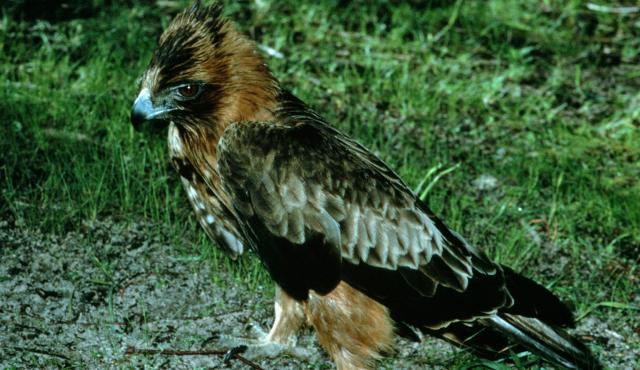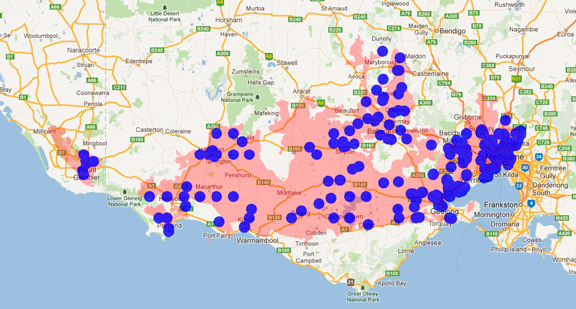A range of teacher professional learning programs will be developed to accompany the Biodiversity of the Western Volcanic Plains online outreach...

Little Eagle
Hieraaetus morphnoides
Breeding season is from August to December in southern Australia. Nests in mature, living trees that are rarely isolated. Clutch size is usually 2, sometimes 3. Incubation is usually carried out by the female, although the male will incubate while the female feeds. Incubation is from 30-40 days. The male hunts for food for the young. Young fly at 55-65 days.
| Details | Description |
| Type | Bird |
| Group | Raptor |
| Identifying Characteristics | |
| Distinctive Markings | Distinctive underwing 'M'. Pale, broken 'M' across upperparts. |
| Diet | Carnivore. Mainly rabbits, birds such as ducks, also possums, cats and foxes. |
| Habitat | Coastal forest, woodland, open scrub, tree-lined watercourses of the interior. |
| Native Status | Native to Australia |
| Sounds | Very rapid "chik - a - chik", or "chik - a - chuk, kuk" call is usually given as part of a display. |
| Taxonomy | |
| Phylum | Chordata |
| Class | Aves |
| Order | Falconiformes |
| Family | Accipitridae |
| Genus | Hieraaetus |
| Species | morphnoides |

Distribution maps indicate current and historic locations where species have been sighted.
Source: Atlas of Living Australia
| Conservation Status | |
| DEPI Advisory List | Not listed |
| FFG Act | Not listed |
| EPBC Act | Not listed |
The conservation status of species is listed within Victoria and Australia.
The Department of Environment and Primary Industry (DEPI) Advisory List consists of non-statutory advisory lists of rare or threatened flora and fauna within Victoria.
The Flora and Fauna Guarantee Act 1988 (FFG Act) lists threatened species in Victoria. Under the Act, an Action Statement is produced for each listed species.
The Environment Protection and Biodiversity Conservation Act 1999 (EPBC Act) is the Australian Government’s key piece of environmental legislation, listing nationally threatened native species and ecological communities.



